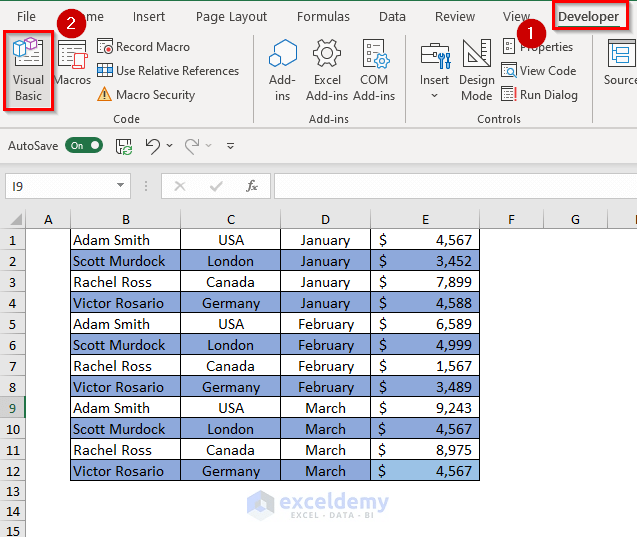5 Ways to Split Excel Sheets into Worksheets Fast

The need to split Excel sheets into separate worksheets can arise for various reasons, from simplifying data management to enhancing data analysis efficiency. Here are five efficient methods to accomplish this task, each catering to different needs and skills:
1. Using Excel’s Built-in Functions


Excel has several native tools that can help you split data into different sheets:
- Text to Columns: Ideal for splitting a column into multiple columns based on delimiters or a fixed width.
- Advanced Filter: Use this if you want to filter data into a new sheet.
To split a large table into multiple sheets using Advanced Filter:
- Select the table you want to split.
- Go to Data > Advanced.
- Choose the list range and criteria range.
- Check "Copy to another location" and choose where you want the new worksheets to be.
- Click "OK".
💡 Note: This method is excellent for unique values but might need additional steps for multiple criteria.
2. VBA Scripting for Advanced Splitting


VBA (Visual Basic for Applications) allows for more customized Excel data manipulation, especially useful when dealing with complex data:
- Automate splitting based on multiple conditions.
- Create new workbooks or worksheets with specific data segments.
Here's a simple VBA script to split data into new worksheets:
Sub SplitData()
Dim ws As Worksheet
Dim newWs As Worksheet
Dim lastRow As Long, i As Long
Dim rng As Range
Dim strCol As String
Set ws = ThisWorkbook.Sheets("Data")
lastRow = ws.Cells(ws.Rows.Count, 1).End(xlUp).Row
strCol = "A" 'Change this to the column you want to split by
Application.ScreenUpdating = False
For i = 2 To lastRow
On Error Resume Next
Set newWs = Worksheets(ws.Cells(i, strCol).Value)
If newWs Is Nothing Then
Set newWs = Worksheets.Add(After:=Worksheets(Worksheets.Count))
newWs.Name = ws.Cells(i, strCol).Value
End If
ws.Rows(i).Copy Destination:=newWs.Range("A1")
Set newWs = Nothing
Next i
Application.ScreenUpdating = True
End Sub
💻 Note: You will need to adjust the column letter (strCol) to match the column you want to use for splitting your data.
3. Third-Party Add-ins

Several third-party tools exist to automate Excel data manipulation tasks:
- They often provide user-friendly interfaces for complex operations.
- Can handle large datasets efficiently.
4. Power Query for Data Transformation


Power Query, part of Excel’s Power BI tools, offers powerful data transformation capabilities:
- Group by unique values and then export each group to a new sheet.
- Perform data cleansing and transformation before splitting.
To split data using Power Query:
- Load your data into Power Query by selecting your range and going to Data > From Table/Range.
- Use the "Group By" feature to split data by a specific column.
- Export each group to a new Excel worksheet.
5. Manual Splitting

If your dataset is not too large, manual splitting might be the simplest option:
- Sort data by the column you want to split on.
- Manually copy the required rows to new sheets.
While time-consuming, this method is useful when you need full control over each entry.
In summary, the process of splitting Excel sheets can be approached in several ways, depending on the complexity of your data, your familiarity with Excel, and your available time. From native Excel functions to powerful scripting options, there's a solution for everyone. By choosing the right method, you can efficiently manage your data and enhance productivity. Remember, each method has its advantages:
What is the best way to split data in Excel?

+
The best method depends on your data’s complexity. For simple datasets, use Excel’s built-in tools like Text to Columns or Advanced Filter. For more advanced splitting, VBA scripting or Power Query might be more effective.
Can VBA scripts handle large datasets?

+
Yes, VBA can efficiently manage large datasets, but performance can depend on the script’s efficiency and the dataset’s size. Optimization techniques like disabling screen updates can help.
Is it possible to undo a split in Excel?

+
If you use Excel’s native features or manually split, you can undo your actions. However, VBA scripts or Power Query operations will require manual consolidation or a backup.



